This inertia experiment is super easy and a great fun science trick for kids and adults!
If you want to learn more about Isaac Newton’s Laws of Motion or forces in general I’ve got lots more forces and motion experiments you can try!
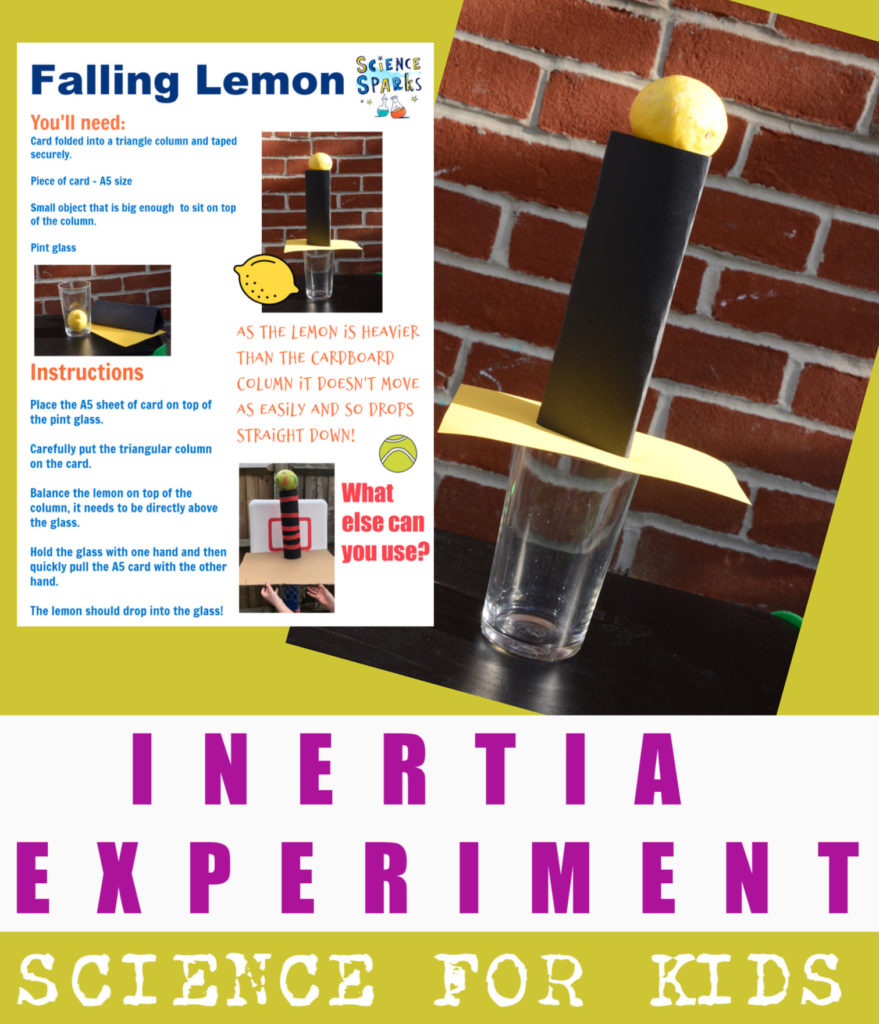
What is inertia?
Isaac Newton’s First Law states that an object stays still or keeps moving at the same speed and in a straight line unless it is acted upon by a force.
In simple terms that means if an object isn’t moving ( imagine a book on the floor ) it won’t start to move unless a force makes it move ( for example, if you push the book ).
Isaac Newton’s First Law is known as the Law of Inertia.
Easy Inertia Experiment
You’ll need:
Card folded into a triangle column and taped securely.
Piece of card – A5 size
Small object that is big enough to sit on top of the column.
Pint glass
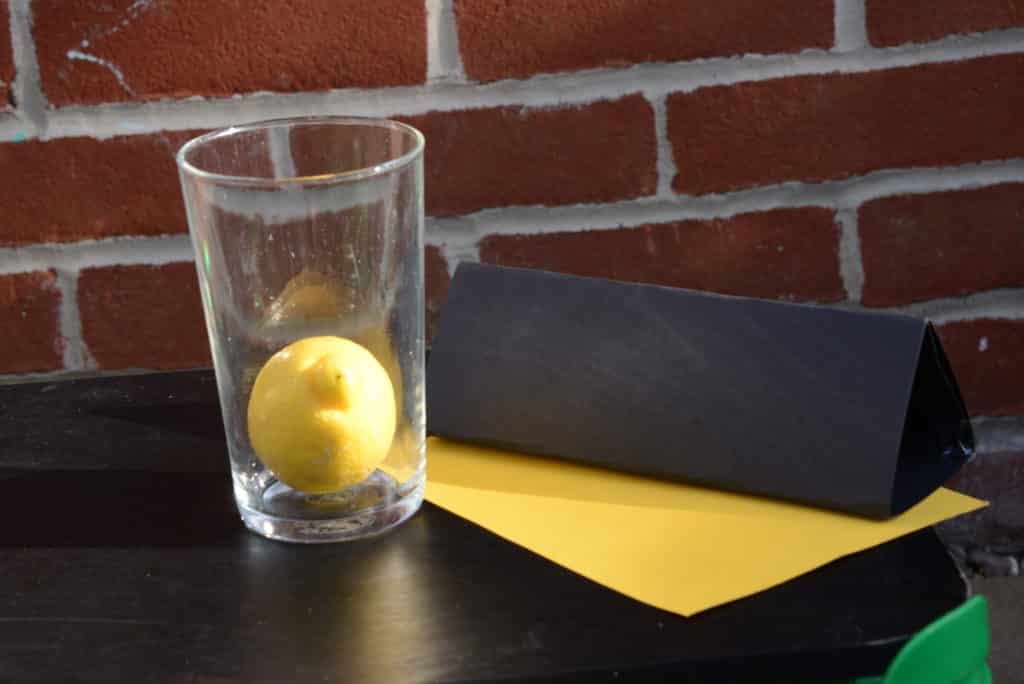
Inertia Experiment Instructions
Place the A5 sheet of card on top of the pint glass.
Carefully put the triangular column on the card.
Balance the lemon on top of the column, it needs to be directly above the glass.
Hold the glass with one hand and then quickly pull the A5 card with the other hand.
The lemon should drop into the glass!
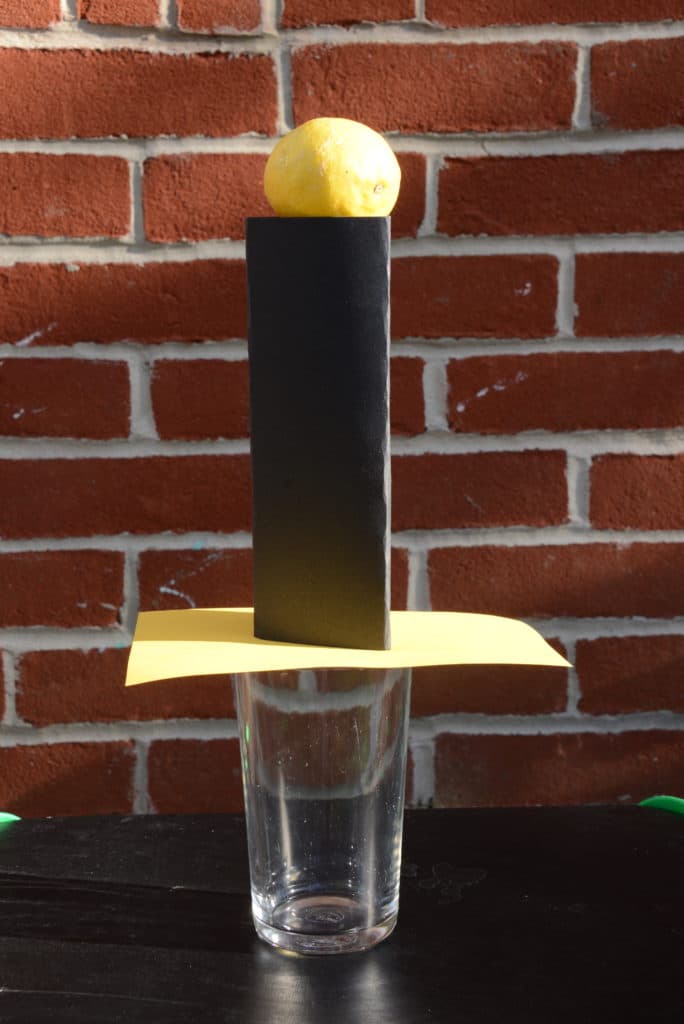
Why does this work?
The lemon is heavier than the cardboard column which means it doesn’t move as easily as the column when the cardboard is pulled from underneath.
There isn’t a sideways force acting on the lemon so it falls straight down because of gravity.
Newton’s First Law states that an object at rest remains at rest unless acted on by a force.
More Forces Experiments for Kids
Design, build and launch a water powered bottle rocket!
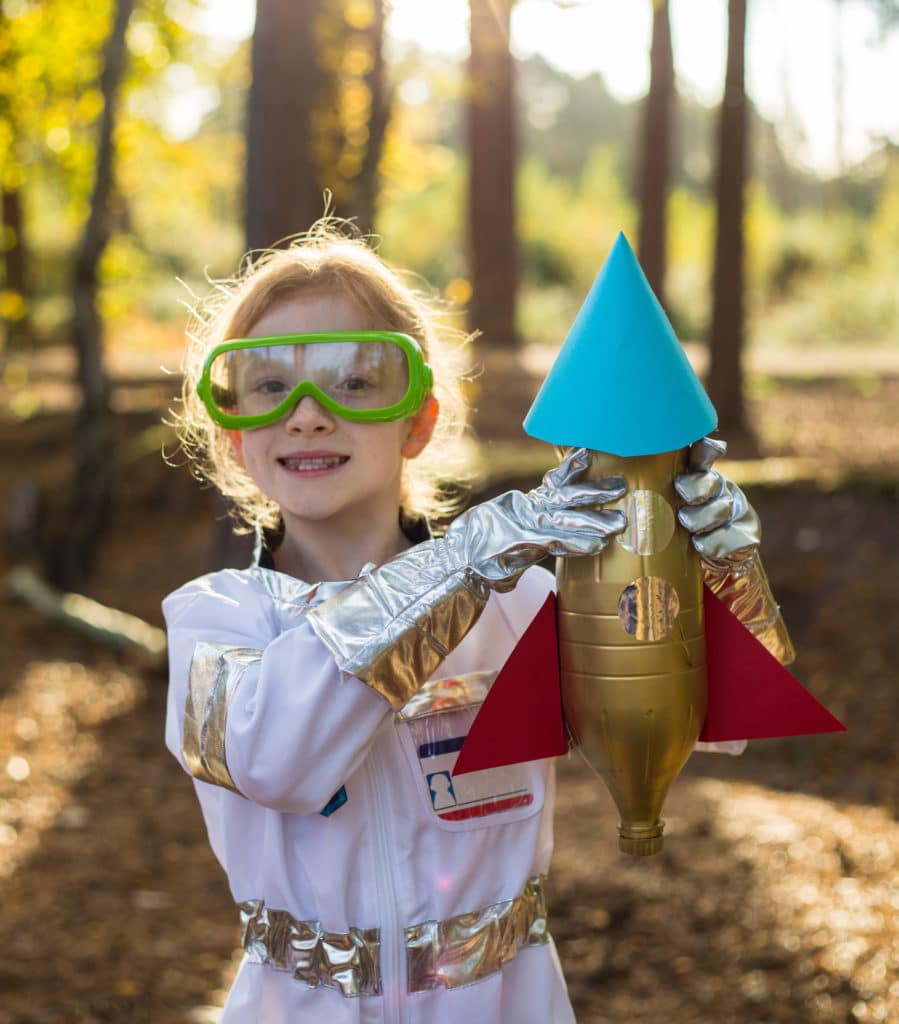
Learn about potential energy with a cotton reel car or make a balloon powered car.
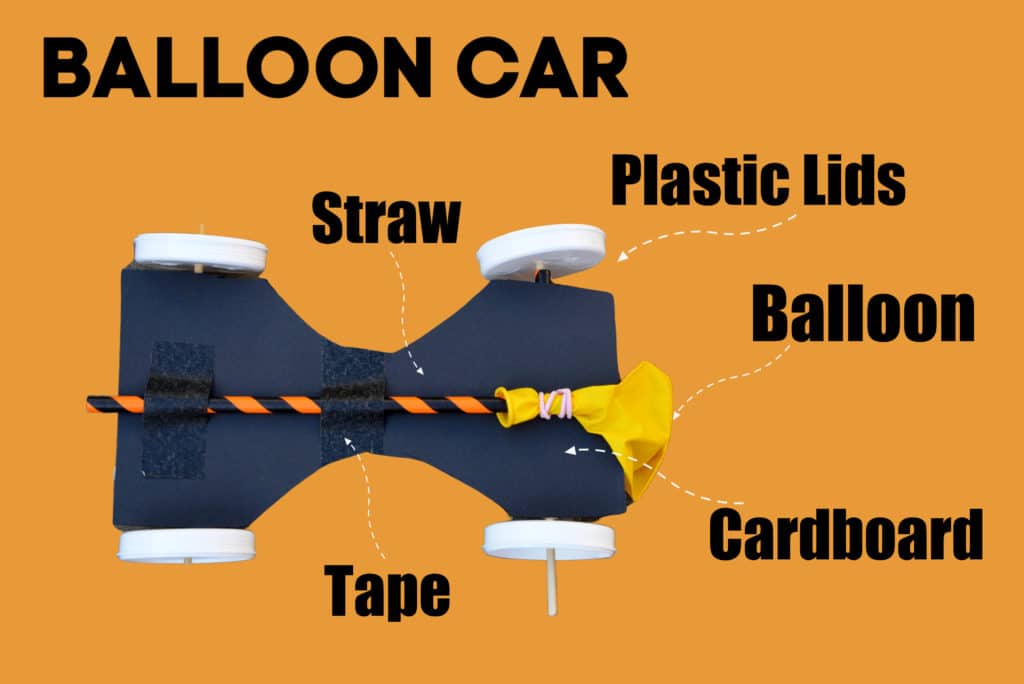
Learn more about Newton’s Laws of Motion and how they apply to space travel in my book, This IS Rocket Science!
Affiliate links
Last Updated on May 29, 2020 by Emma Vanstone

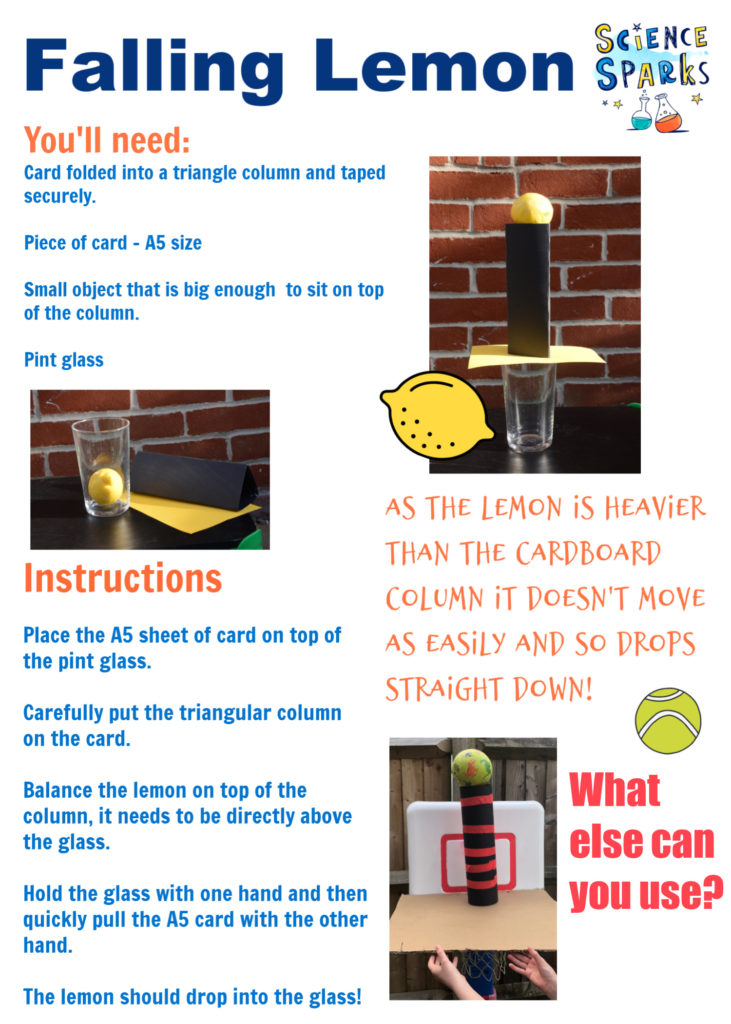
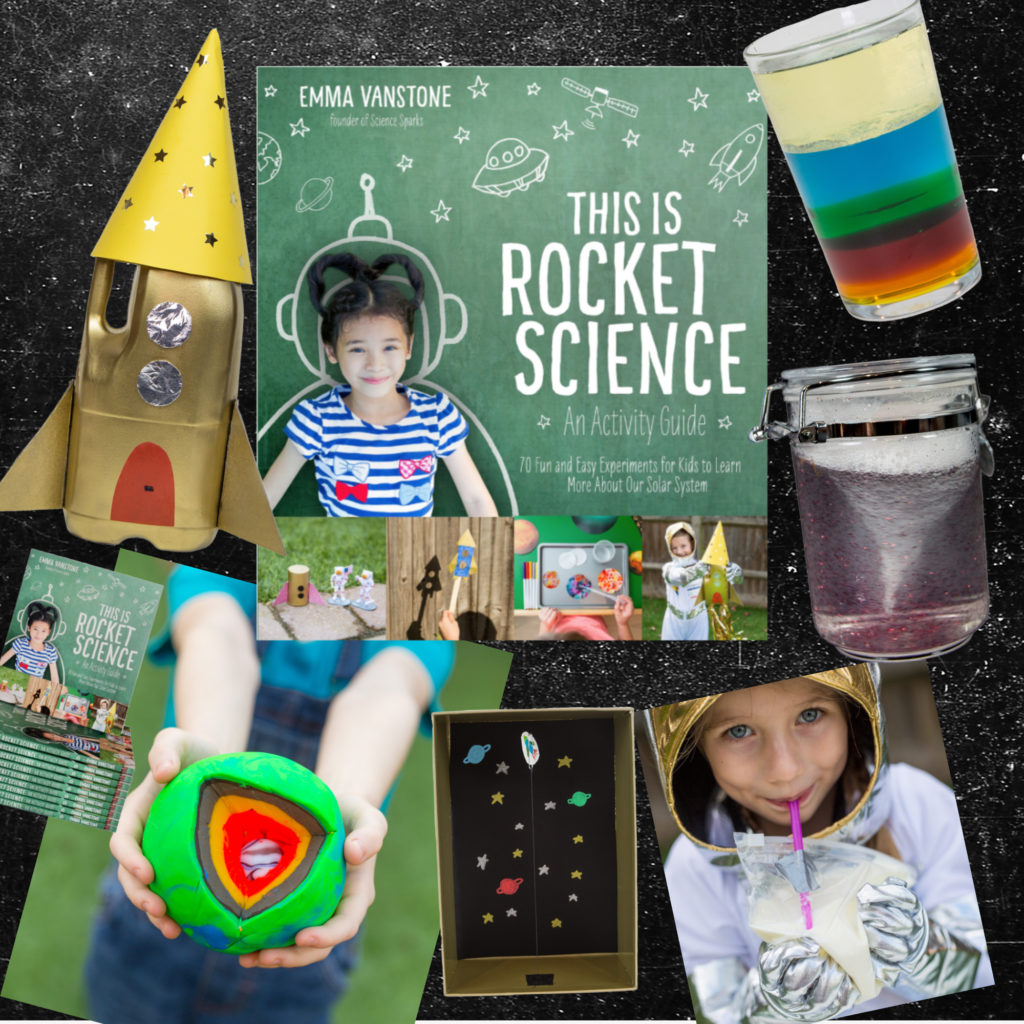
Leave a Reply